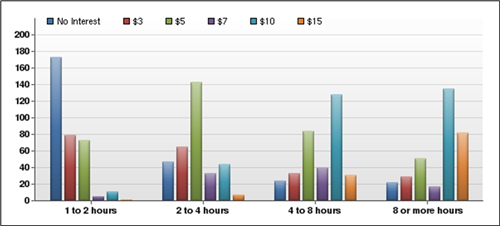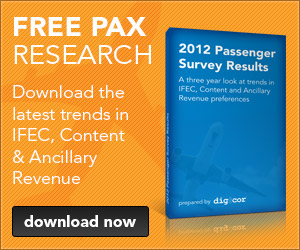Each month, I have the pleasure of finding several valuable and interesting articles for our newsletter Airline Solutions Insider. In my search, I had found several articles suggesting that in-flight Wi-Fi would be free by next summer when another article outlining how much revenue the connectivity industry was set to generate this year caught my attention. Not surprising, there are some opposing views of how financially viable in-flight connectivity is or will be.
Will Wi-Fi be free some time next year?
With the introduction of a-la-carte pricing models, some experts believe that paying for Internet access is the last straw. Many passengers are willing to wait the few hours to land before reconnecting. In fact, the flight may be your only chance to escape your inbox.
Further, free Wi-Fi hotspots are growing in number across coffee shops, hotels, fast food restaurants, and other public areas. Meaning, we as consumers are being conditioned to expect free access to the Internet. So for how long will airlines be able to charge usage fees?
Michael Planey, of H&M Planey Consultants, believes that airlines such as JetBlue, AirTran and Southwest will lead the pack with free Wi-Fi. He even predicts that it will happen come mid-2011.
Planey thinks the answer to the riddle may be one or a mixture of the following options.
- “Getting big companies like Google or Verizon to sponsor free Internet service. Those providers would make money through advertisements.
- Pay for some part of the service themselves and then use it to cut costs. For example, a flight attendant could use the inflight Wi-Fi to connect with reservations at the terminal and make new arrangements for passengers who missed a connecting flight.
- Airlines could arrange ways to get a commission when travelers buy things online.”
Is Wi-Fi revenue exploding?
On the other side of the argument, a recent article in Bloomberg Businessweek states, “Revenues from in-flight broadband access are expected to jump from $7 million in 2009 to $95 million this year, according to a June 30 report from consultant In-Stat.”
In-State also noted that, “In-flight broadband is now at the stage of market development where it must prove its sustainability through the ability to generate revenues.” Frank Dickson, Vice President of Research, indicated that “the per-connect fee is expected to deteriorate as lower connect fees are negotiated for roaming and billing partner subscribers. In fact, connect fees are expected to decline 24 percent from 2010 to 2014, while in-flight broadband connects will exceed 76 million in 2012.”
Apparently, the old adage, “Don’t put all your eggs in one basket,” holds very true for the in-flight connectivity market. Finding new and different ways to cover the costs of connectivity will be essential as revenue from usage fees is expected to decline or disappear altogether.
Passengers’ perspective
Curious to see how consumers feel about paying for in-flight connectivity, we asked several questions about price sensitivity in our 2010 Passenger Survey. Survey respondents were asked to decide what was the most they were willing to pay for Internet access based on flight lengths. The image below shows the results. The left column shows the number of respondents.
Here’s another perspective.
The reality is that with smartphones, netbooks, and other devices keeping everyone constantly connected, passengers do expect to stay connected while in-flight. Many travelers enjoy the social experience that results from in-flight connectivity. Though with every inch the industry moves forward, we need to ensure that we aren’t falling a foot behind in debt.

















